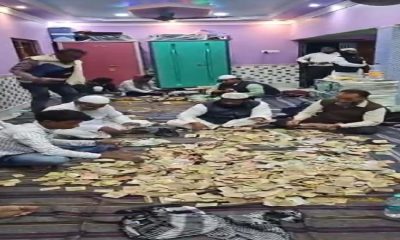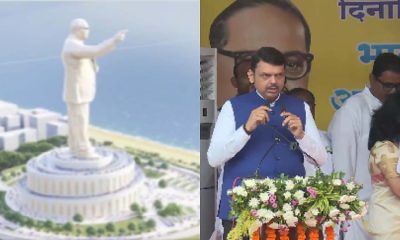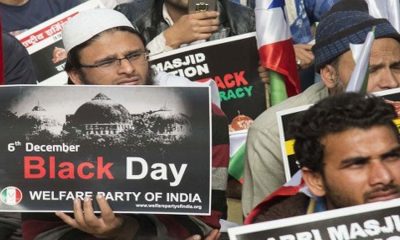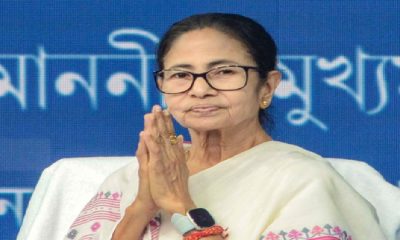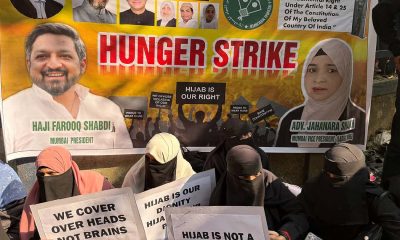National News
Ghulam Nabi Azad: Elephant in the China shop of Cong, NC, PDP
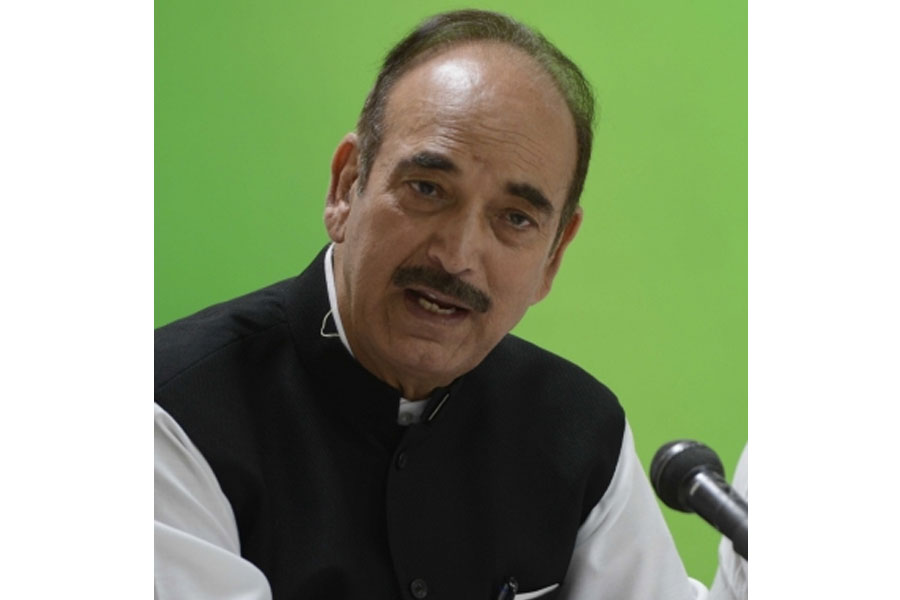
All the traditional political combinations and permutations went for a toss in Jammu and Kashmir after the former senior Congress leader, Ghulam Nabi Azad decided to throw his hat into the electoral ring here.
After standing steadfast with the Congress for 52 long years, Azad has become the most serious challenge faced by the party in J&K.
Already many senior leaders of the Congress have resigned to join Azad who is likely to announce a new political party this week on his arrival in Jammu.
The turbulence that has hit the Congress is likely to upset the political equations of the National Conference (NC) and the Peoples Democratic Party (PDP) if not in the Valley, but definitely in the Jammu division.
The Muslim vote becomes a decisive factor in the Chenab Valley districts of Doda, Kishtwar and Ramban.
Azad has personal influence and goodwill in Poonch, Rajouri, Jammu, Kathua, Samba, Udhampur and Reasi districts as well.
This personal goodwill might not necessarily translate into the number of assembly seats his party wins in these 7 districts but it could decide who loses the elections in those districts.
The BJP is well entrenched in Jammu, Kathua, Samba, Udhampur and Reasi where its arch rival till yesterday, the Congress, will now have to dig in its feet to register some electoral victories.
Interestingly, the Congress in the Jammu division is likely to face an electoral challenge from the hitherto unknown Aam Aadmi Party (AAP) that has gradually spread its influence to Jammu, Samba and Kathua after its victory in the neighbouring Punjab.
So far as the impact of the AAP on the ground level support of the BJP in these districts is concerned, it is unlikely that the BJP will concede seats to the AAP.
This clearly indicates that the loss of the Congress could well be the gain of either the BJP or the AAP.
Even in these seats, Azad can upset traditional equations because of his support, though limited, among both the Hindu and the Muslim voters.
In the districts of Doda, Kishtwar and Ramban, Azad’s entry into the electoral fray is likely to become an elephant in a china shop.
He is likely to win seats in these three districts. How many seats would his party win can be debated, but how many will the NC and the PDP lose in these districts because of Azad’s presence must worry the two otherwise Valley-centric regional parties.
In Poonch and Rajouri districts, the NC has been winning at least 5 to 6 seats in the past. Once the Muslim vote gets divided between the NC and Azad, the BJP would stand to gain in these two districts.
The Peoples Conference (PC) headed by Sajad Gani Lone and the Apni Party headed by Syed Altaf Bukhari are likely to win around half a dozen or more seats in assembly constituencies in the Valley.
These 2 parties are still to establish themselves firmly in the Jammu division.
In a nutshell, Azad could well be an elephant in the political china shop of the Congress, NC and the PDP especially in the Jammu division that has 43 seats in the 90-member UT assembly.
Business
IndiGo disruptions may cause revenue loss, penalties to company: Report
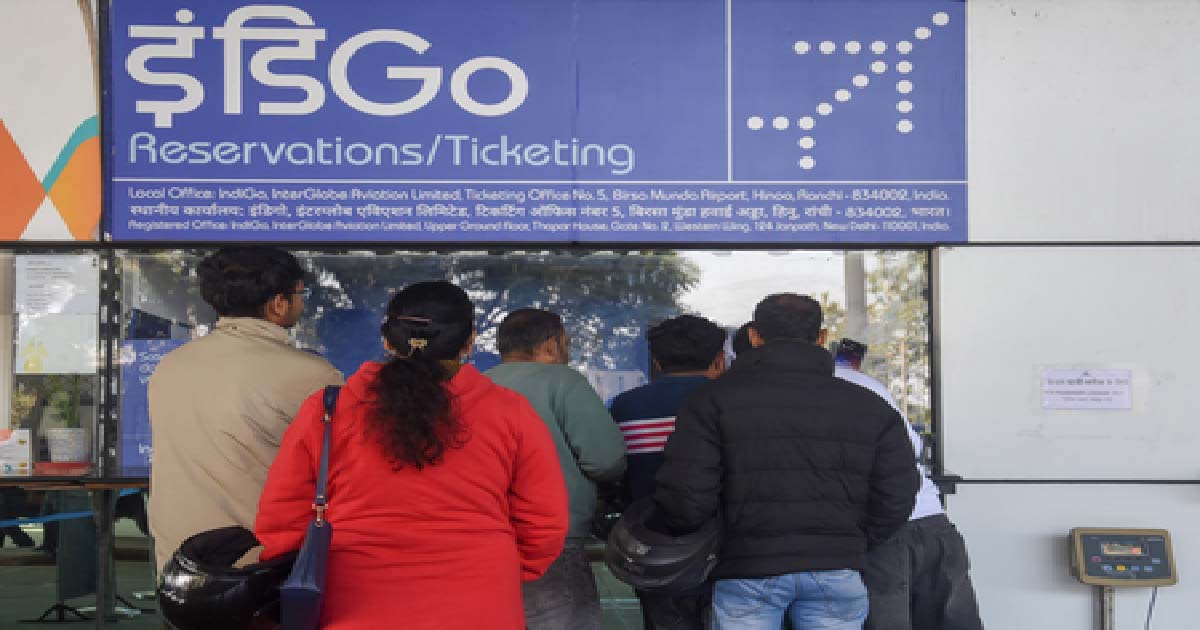
New Delhi, Dec 8: Widespread flight disruptions at IndiGo are credit negative, and refunds and compensation could cause it “significant financial damage”, credit rating agency Moody’s warned on Monday.
In a note, Moody’s said that regulatory penalties from the Directorate General of Civil Aviation (DGCA) remain possible as the airline failed to plan for aviation rules communicated over a year earlier.
The crisis struck as the airlines entered their peak winter schedule, with “significant lapses in planning, oversight and resource management” as the Phase 2 of the Flight Duty Time Limitation (FDTL) rules were introduced on November 1, 2025, after being communicated more than a year earlier, it noted.
The rules reclassified midnight–6 a.m. duties as night duty and cut permissible landings in 24 hours from six to two or three. The agency said that IndiGo’s lean operating model lacked resilience to integrate the change, forcing a system‑wide schedule reset.
Over 1,600 flights were cancelled on December 5, and over 1,200 were grounded in November, with cancellations beginning on December 2. Moody’s said IndiGo is yet to fully restore normal operations.
IndiGo said it was set to operate over 1,800 flights on Monday, up from 1,650 on Sunday, adding that more than 4,500 bags have been delivered to respective customers, and “we are on track to deliver the rest in the next 36 hours”.
The airline said it expects a return to full schedules by mid-December, adding that it is working “round the clock” to normalise operations.
It has so far refunded Rs 827 crore to affected passengers, and the rest is under process for cancellations up to December 15.
Union Civil Aviation Minister K. Rammohan Naidu said in the Parliament on Monday that the government has initiated a thorough inquiry into the matter.
“IndiGo was supposed to manage the crew and roster…We will take strict action. We will set an example for every airline. If there is any non-compliance, we will take action,” he said on the floor of the Rajya Sabha.
Crime
Palghar Crime: 40-Year-Old Constable Arrested For Allegedly Raping Woman Inside Kasa Police Station

Palghar, Maharashtra, Dec 08: A 40-year-old police constable has been arrested for allegedly raping a woman inside the Kasa police station in Maharashtra’s Palghar district, officials said on Monday.
According to a senior official from the Palghar rural police, the incident took place last week when the woman had visited the station to record her statement in connection with an ongoing case. The constable allegedly assaulted her within the premises.
Following a complaint filed by the woman, a case of rape was registered and the constable was arrested on Sunday, officials confirmed.
In the aftermath of the incident, the in-charge of the Kasa police station has been transferred. Further investigation is underway.
National News
PM Modi recalls how Vande Mataram defied British oppression, stood ‘like a rock’
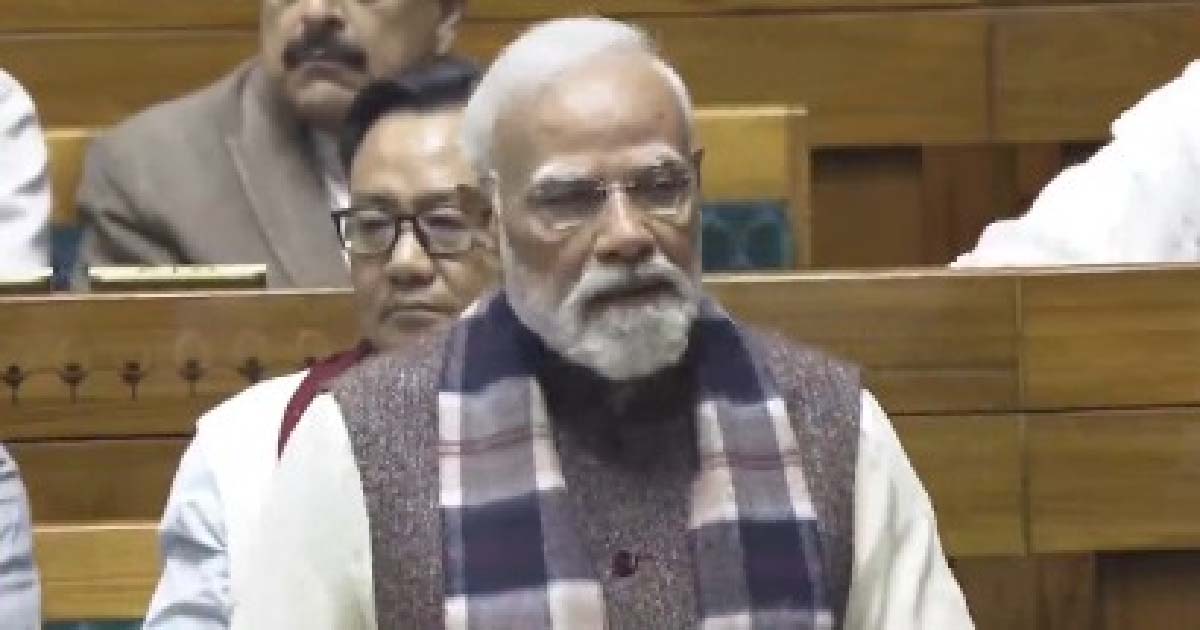
New Delhi, Dec 8: Prime Minister Narendra Modi, on Monday, invoked the enduring spirit of ‘Vande Mataram’ while initiating a day-long discussion in the Lok Sabha to mark the 150 years of the national song.
He described it as a hymn that stood “like a rock” against British oppression and continued to inspire unity across generations.
Tracing the song’s journey from its composition by Bankim Chandra Chattopadhyay in 1875 to its role in the freedom struggle, PM Modi said ‘Vande Mataram’ became a current of emotion that bound the nation together.
“Even when crises like the coronavirus pandemic struck, the spirit of ‘Vande Mataram’ continued to connect the country. Today, as we march towards an ‘Atmanirbhar Bharat’ (Developed India), this hymn remains a source of strength,” he noted.
The Prime Minister quoted Mahatma Gandhi, who had described ‘Vande Mataram’ as a song that united the nation.
“Pujya Bapu (Mahatma Gandhi) said ‘Vande Mataram’ connects us. It is the dream of today’s generation to build a prosperous India, and this song continues to inspire that vision,” PM Modi said.
He emphasised that the hymn was more than just words — it was a mantra of sacrifice, resilience, and unity.
From the days of colonial bans, when people were punished for speaking or printing the words, to the sacrifices of countless freedom fighters who embraced martyrdom with ‘Vande Mataram’ on their lips, the song has remained a symbol of defiance and hope.
PM Modi urged the Parliament to ensure that the legacy of ‘Vande Mataram’ is preserved and passed on to future generations.
“This is not just a tribute to history but a reaffirmation of our democratic spirit. The lessons of the past must continue to guide our future,” he said, adding that the 150th anniversary was an opportunity to restore pride in a hymn that has been the heartbeat of Bharat.
Initiating a day-long discussion on 150 years of ‘Vande Mataram’ in the Lok Sabha, PM Modi noted that ‘Vande Mataram’ stood like a rock and inspired unity despite British oppression.
“When ‘Vande Mataram’ completed 100 years, the nation was chained by the Emergency. At that time, the Constitution was throttled and those who lived and died for patriotism were pushed behind bars,” he said.
“The Emergency was a dark chapter in our history. Now we have the opportunity to restore the greatness of ‘Vande Mataram’. And I believe this opportunity should not be allowed to pass,” PM Modi added.
-

 Crime3 years ago
Crime3 years agoClass 10 student jumps to death in Jaipur
-

 Maharashtra1 year ago
Maharashtra1 year agoMumbai Local Train Update: Central Railway’s New Timetable Comes Into Effect; Check Full List Of Revised Timings & Stations
-

 Maharashtra1 year ago
Maharashtra1 year agoMumbai To Go Toll-Free Tonight! Maharashtra Govt Announces Complete Toll Waiver For Light Motor Vehicles At All 5 Entry Points Of City
-

 Maharashtra1 year ago
Maharashtra1 year agoFalse photo of Imtiaz Jaleel’s rally, exposing the fooling conspiracy
-

 National News1 year ago
National News1 year agoMinistry of Railways rolls out Special Drive 4.0 with focus on digitisation, cleanliness, inclusiveness and grievance redressal
-

 Maharashtra1 year ago
Maharashtra1 year agoMaharashtra Elections 2024: Mumbai Metro & BEST Services Extended Till Midnight On Voting Day
-

 National News1 year ago
National News1 year agoJ&K: 4 Jawans Killed, 28 Injured After Bus Carrying BSF Personnel For Poll Duty Falls Into Gorge In Budgam; Terrifying Visuals Surface
-

 Crime1 year ago
Crime1 year agoBaba Siddique Murder: Mumbai Police Unable To Get Lawrence Bishnoi Custody Due To Home Ministry Order, Says Report



